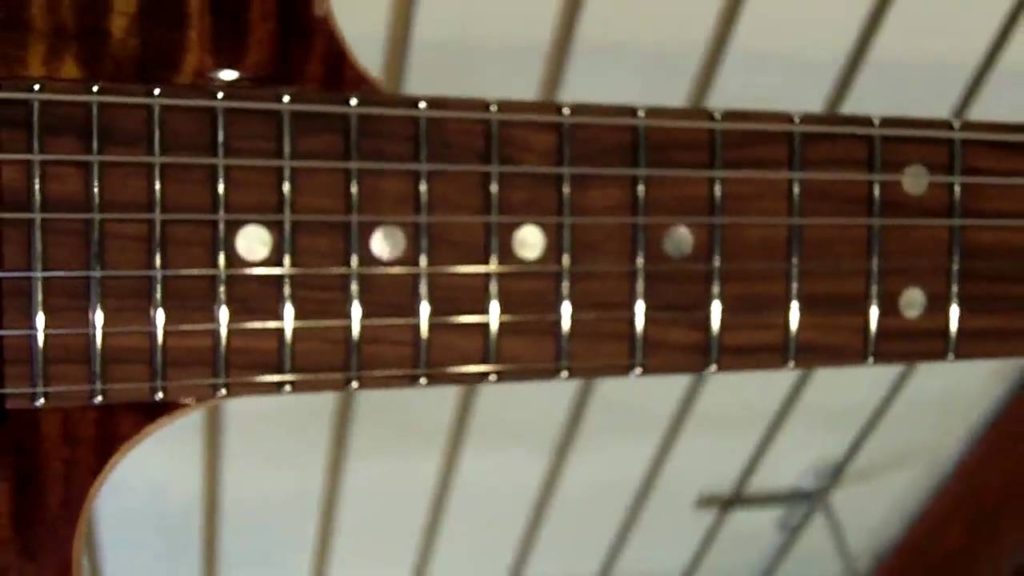The Guitar tone bug. Why guitar tone has once again become my number one priority instead of reliability, cost, and convenience.
Not so long ago, the vast majority of my guitar-playing time was spent either gigging or rehearsing for gigs, and my priorities were reliability, cost, and convenience, definitely NOT guitar tone. Reliability? Because I’d been down the road of faulty valve amps, spare guitars, and the disabling anxiety and worry of something going wrong mid-gig or even mid-song. Cost? Because I plain didn’t have the budget for expensive gear and convenience because I wanted to make the whole gigging experience as slick, quick, and painless as possible, eventually managing a single-trip load-in.
Gladly, those compromises, in reality, weren’t so much of a compromise. I’d happily recommend the Squier Telecaster Custom II (P90s), BOSS Katana 50 (MKI) and the BOSS ME-80 to anyone, and they served me in good stead with the punters at the Dog and Duck being non-the-wiser.
Nevertheless, I’ve spent a big chunk of the last 10 years being embracing the art of the cheap guitarist.
Guitar tone matters.
Once I’d got back into playing for myself, rather than for a wage to strangers, It surprised me just how quickly my old gear went out the door. I guess two things happened, the most obvious one being that, under the microscope of home music production, the drawbacks of using affordable gear were exposed in the form of an affordable tone, which, this time, I wasn’t prepared to settle for.
This leads nicely into the second reason, which is simply pride and pleasure in sounding the best I can. I could never justify the effort and expense for a couple of claps in the worst haunts of South Shields. Now I can.
Goodbye to value, convenience and reliability.
The moment I realised I was bitten by the guitar tone bug was when I was in the market for a new guitar amp, or rather a new recording, practice amp. Logically, the Yamaha THR10II seemed perfect, with all the convenience of Bluetooth, built-in tuner, FX, various amp models, etc. Then, one day, out on a work do in Stratford upon-Avon, I stumble across a Musicroom, or more importantly a Marshall DSL1 valve amp.
The Marshall was expensive at £240 for 1 watt of power, not very convenient in that it didn’t have half the bells and whistles that the Yamaha had and, being a valve amp, will probably need more TLC. But, and it’s a really important BUT, the tone of the Marshall reminded me of what my priorities really are. I’m not gigging, so reliability is of no concern. I got a new job, so the value is less important, and the convenience thing? that was forgotten about in a wall of thick overdriven Fender Player Stratocaster directly into the Marshall Ultra Gain channel.
I bought the Marshall the very next day with no regrets.
Exploring Guitar tone
So with the first two pillars of my new tone arsenal, the fabulous Player Strat and the Marshall DSL1 in place, I found myself doing what never really worked with affordable gear. Tinkering, exploring. examining and overall getting lost in guitar tone, for hours on end.
Why couldn’t I do this in the affordable/digital realm? Because it was frustrating, disappointing, and complicated. I don’t want a million options. I don’t want to connect my guitar gear to a laptop to edit tones. I don’t want to fight with a million bad tones to finally arrive at a passable one. With my old gear, once I’d found something I could work with, I stopped, I was relieved, I’d killed enough time.
Three decent tones will do me for starters. A great clean, and great overdriven rhythm, and a great lead tone. I’d nailed these in 10 minutes with my new gear. But the other difference is, that all the tones are great, and I’m excited about finding more, I actually want to find more. It couldn’t be further from the chore of setting up the Katana and ME-80.
And speaking of FX…
Separate Guitar FX pedals
Now that I’ve re-adopted this holistic approach to guitar tone, multi-FX are out, as again, convenience and cost(to a certain degree) are of no concern anymore. What’s more important now is the inspiration that comes from a single dedicated delay pedal, something missing in the ME-80 or any multi-FX I’ve ever owned.
I don’t want to sully the magic of the Strat and the Marshall with a piece of junk in front of it or in the FX loop. I want to build up a decent board, maybe starting with something like the Electoharmonix Canyon Delay pedal, which looks like a whole bunch of fun/inspiration.
Conclusion
Affordable gear has its place, whether it’s by necessity, for beginners, casuals, or like me, as a means to an end. But somewhere along the line, I forgot about the simple pleasure of quality guitar tone. I’ve been well and truly bitten by the guitar tone bug again, and so should you!



